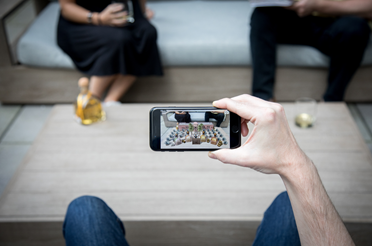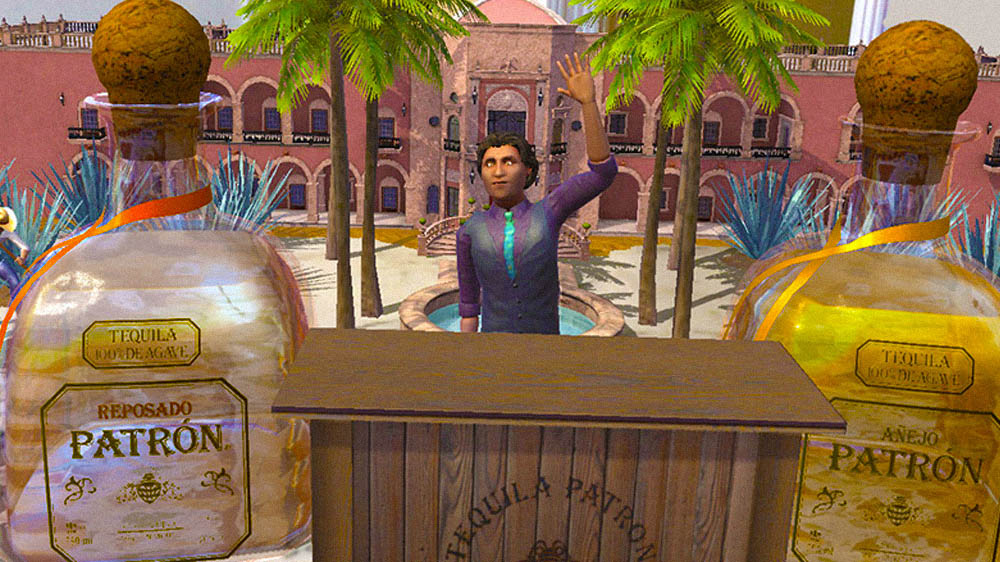Patrón was the first spirit company to explore virtual reality a few years ago with its Samsung Gear VR and Oculus Rift experience. Now the company marks another first, jumping into the augmented reality space.
The Patrón Experience takes users to a virtual world at the Hacienda Patrón in Jalisco, Mexico, the private distillery where the Patrón tequila is produced and bottled. The ARKit created app is available now on Apple devices and is in development on ARCore for Android devices.
Adrian Parker, vice president of marketing at Patrón, told AListDaily the tequila company uses new technology to allow the brand to adapt to the latest trends.
“VR was our first foray into really blending branded storytelling with cutting-edge technology,” Parker explained. “VR allowed us to change how we educate consumers about cocktails.”
Since launching its Hacienda VR Experience, Parker said it’s become a core part of the company’s marketing. The brand has over 200 VR headsets that its sales team uses in meetings with everyone from distributors to restaurant owners to bartenders. They also have over 30,000 Google Cardboards across the world that consumers can use with their phones to explore the VR experience. And in addition to the English and Spanish versions of the Google and Apple apps, it’s also available on YouTube 360.

“We’ve gotten two-plus years of shelf life out of that one VR piece,” Parker said. “We have to think more like content strategists and have a real plan of how to support this type of storytelling. We want to own the story and technology independent of the software and hardware.”
Parker said Patrón will continue to take a mobile-first approach with both VR and AR. He said that 70 percent of all VR activity happens in the mobile space, and people are spending four-to-seven minutes on average experiencing VR.
“AR has evolved from a hype fest into a real tool for business,” Parker said. “AR has been on our radar since before VR with apps like Blippar. It’s been around for a decade, but never had this scale. You always had to download an app and then the consumer had to find your brand experience in that app. Now Apple has introduced this technology to a mass user overnight.”
While the VR is all about immersion and teleporting the user to Mexico, the AR experience focuses on interacting with the Hacienda Patrón. Users can see where the tequila is made and have a bartender guide them through tastings, while hopefully learning something new about tequila.
This AR experience will evolve over time, which is one of the additional benefits of AR. Parker said as the company receives feedback from users, it will iterate the app to incorporate new bottles like the Patron Laliqe crystal bottle that debuts this month with only 299 bottles made worldwide with a $7,500 price tag or the upcoming one liter art deco Silver bottle.
“AR is more modular and it’s a lower cost investment than an immersive VR experience, which we shot on location with 100 employees and drones,” Parker said. “This is all computer-generated, so we don’t have to produce anything.”
Parker said the brand’s highest-performing content is cocktails, so there’s also the opportunity to add cocktails to the AR app for holiday entertainment.
With Swarovski recently partnering with MasterCard’s Masterpass to allow users to purchase products inside of VR, Parker is interested in exploring how to turn new technology like AR, as well as its upcoming launch of Patrón on Amazon Alexa and Google Home, into direct business opportunities.
“If you’ve spent six months on Alexa or in an AR app learning about tequila and cocktails, that’s a prime time to order it,” Parker said. “We’re thinking about how to partner with vendors who can deliver that. We’ll see a shift to add incremental value as these technologies evolve from marketing into a new way to do business.”
In 2016, more people talked about Patrón than any other spirit brand globally, according to Parker, and the brand owns 70 percent of US tequila market.
Parker said the spirit business is similar to health and beauty in that it’s recession proof and ultimately comes down to a popularity contest.
“The opportunity with new technology like AR is in educating consumers more about the tequila they already know and love,” Parker explained. “It’s about staying relevant in a way that makes sense–and reinforcing why we’re a premium brand in the wake of a litany of new tequila offerings that come out regularly.”
The AR and VR experiences take users through the hand-crafted process of how the tequila is made at the hacienda. It’s a process that hasn’t changed since the brand was originally founded 30 years ago.
“We were the first brand to bring quality ingredients and a hand-crafted process to market,” Parker said. “There was no premium tequila before Patrón. We created the premium category–and we have to continue to grow that category.”

